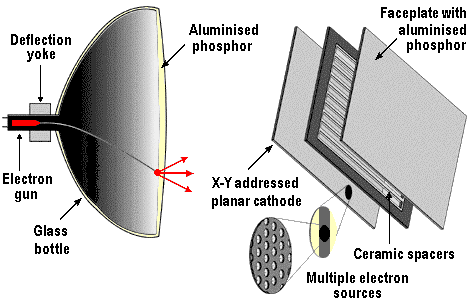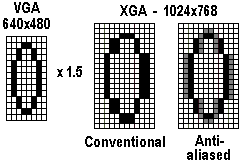US-based Candescent Technologies calls its implementation of FED technology ThinCRTs. The technology works on the same principles as standard picture tubes used by desktop computers and televisions. Beams of electrons are fired from … [Read more...]
What in the LCD is IPS!?
PC monitors have come a long way since the 1980s, when huge, hot and noisy boxes sucked in gallons of air and layers of dust, and seared lime green on black text into the weary eyes of computer operators. However, the once lowly CRT monitor advanced in strides through the 1990s and into the … [Read more...]
LCD Resolutions and Picture Scaling
LCDs follow a different set of rules than CRT displays offering advantages in terms of bulk, power consumption and flicker, as well as perfect geometry. They have the disadvantage of a much higher price, a poorer viewing angle and less accurate colour performance. While CRTs are … [Read more...]
TFT LCD Monitors
Many companies have adopted Thin Film Transistor (TFT) technology to improve colour screens. In a TFT screen, also known as active matrix, an extra matrix of transistors is connected to the LCD panel - one transistor for each colour (RGB) of each pixel. These transistors drive the … [Read more...]
VA – Vertically Aligned LCD Monitors
In late 1996, Fujitsu unveiled a TFT-LCD panel that used a new type of liquid crystal (LC) material that is naturally horizontal and has the same effect as IPS, but without the need for the extra transistors. Fujitsu used this material (which was developed by Merck of Germany) for … [Read more...]

